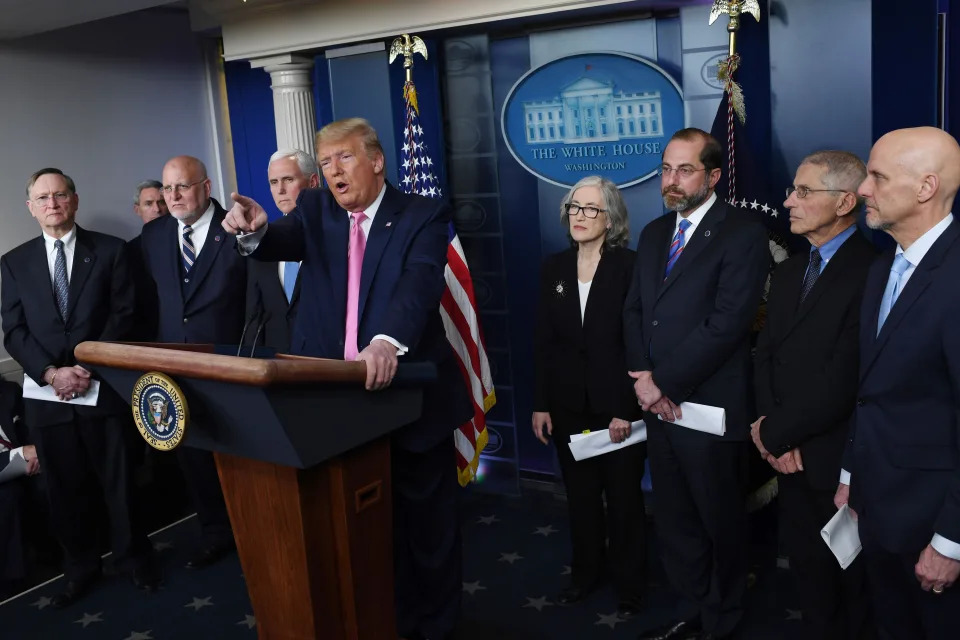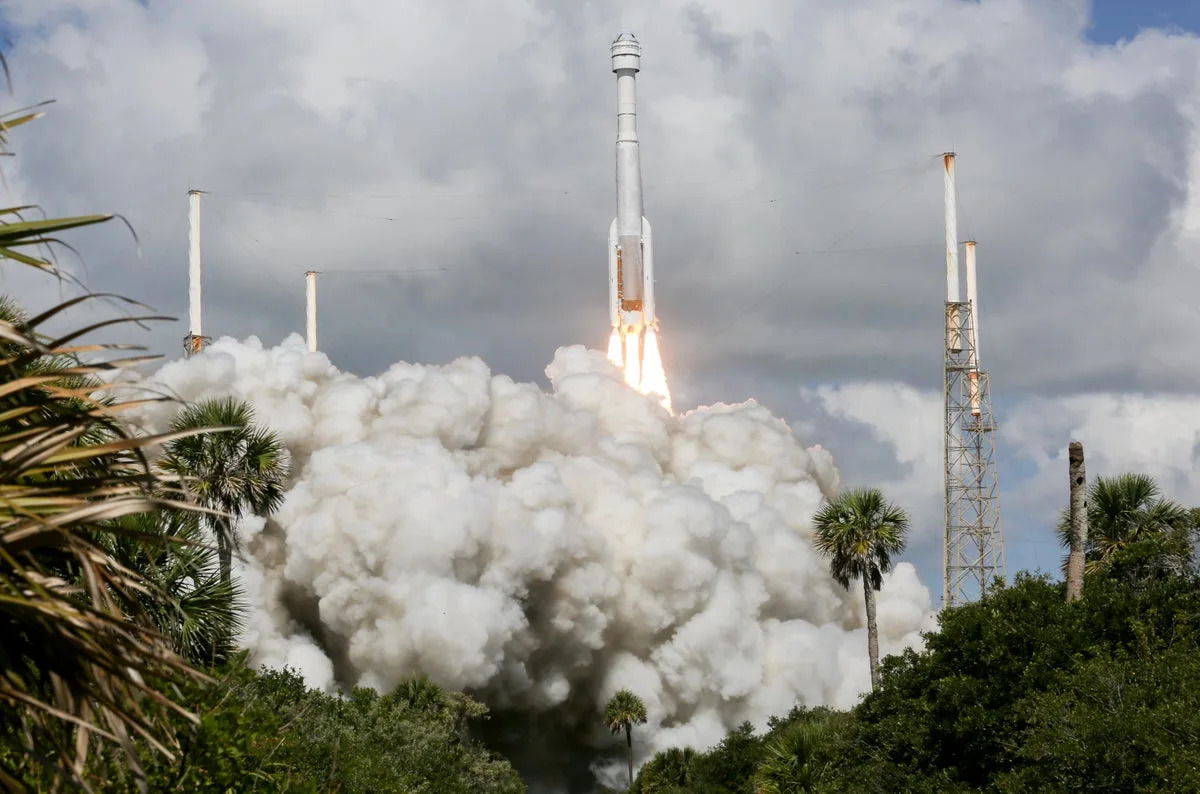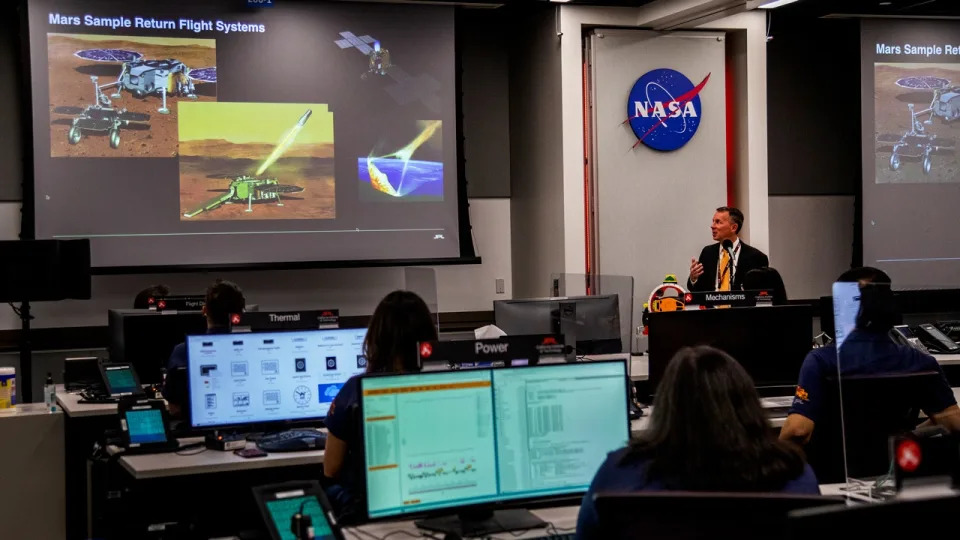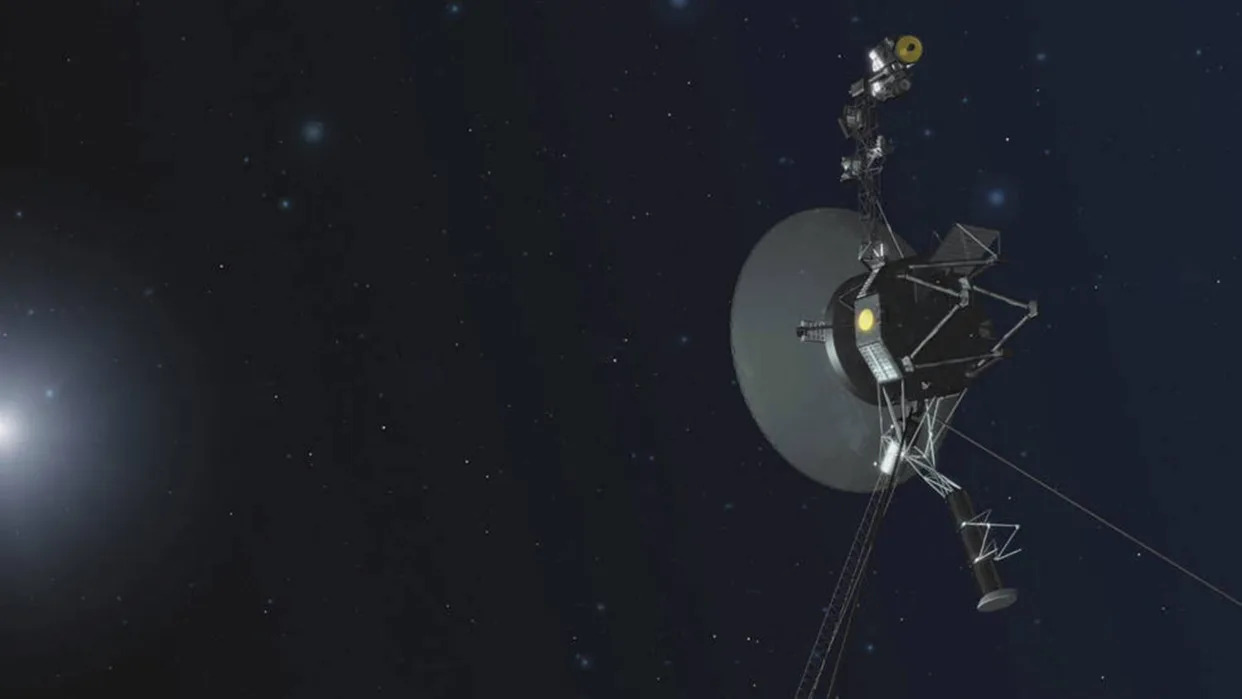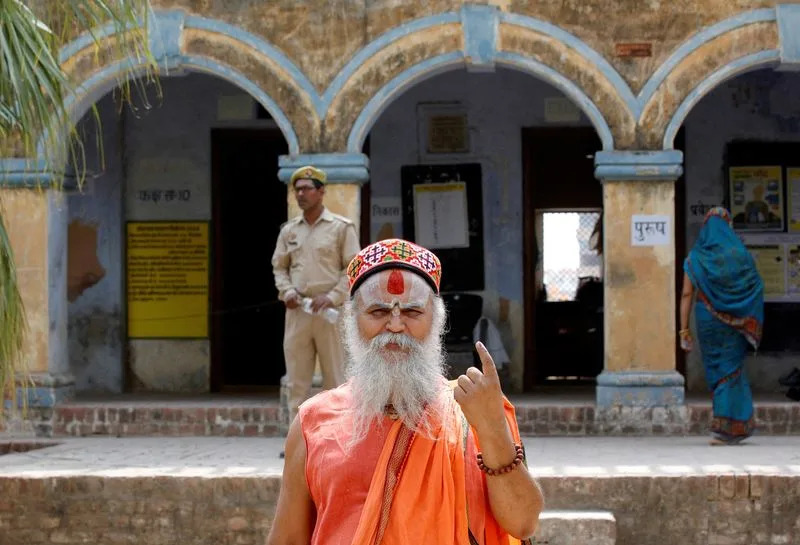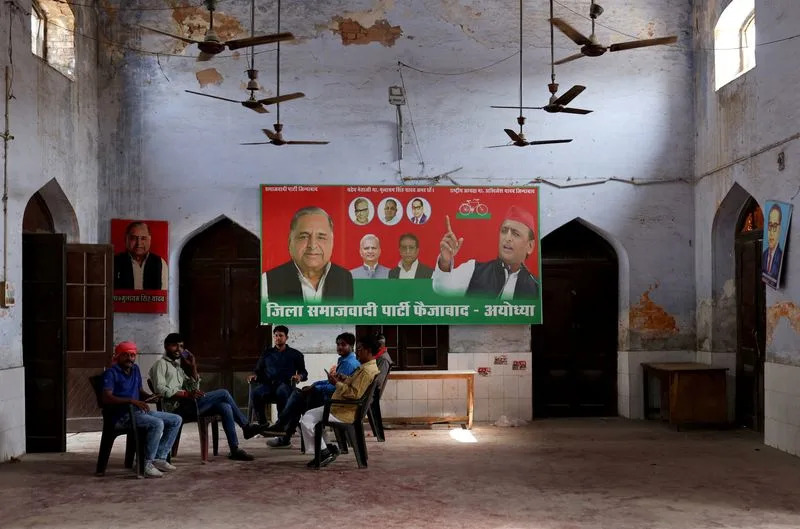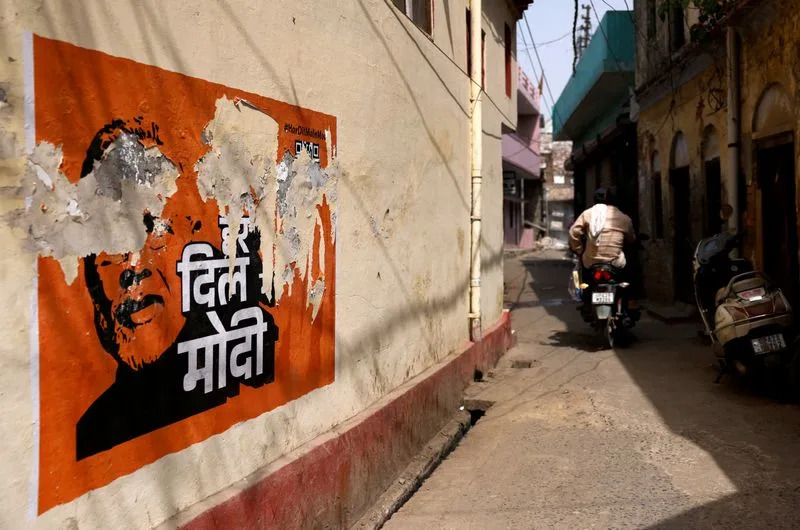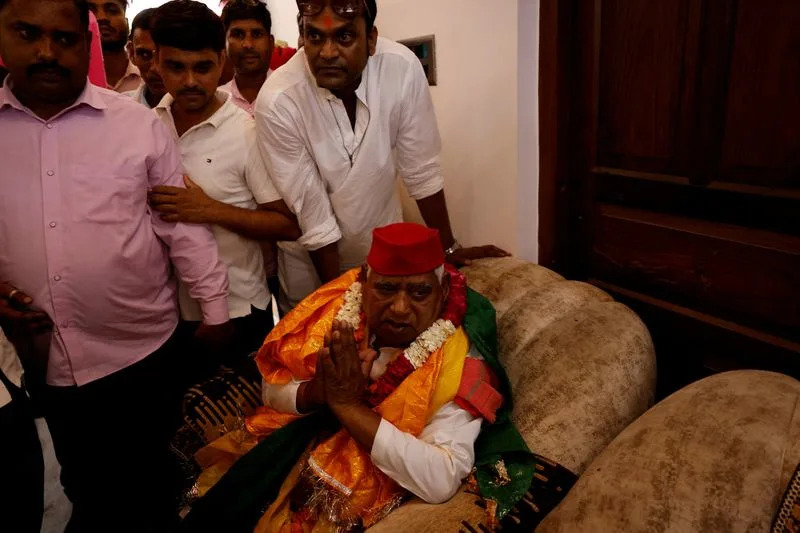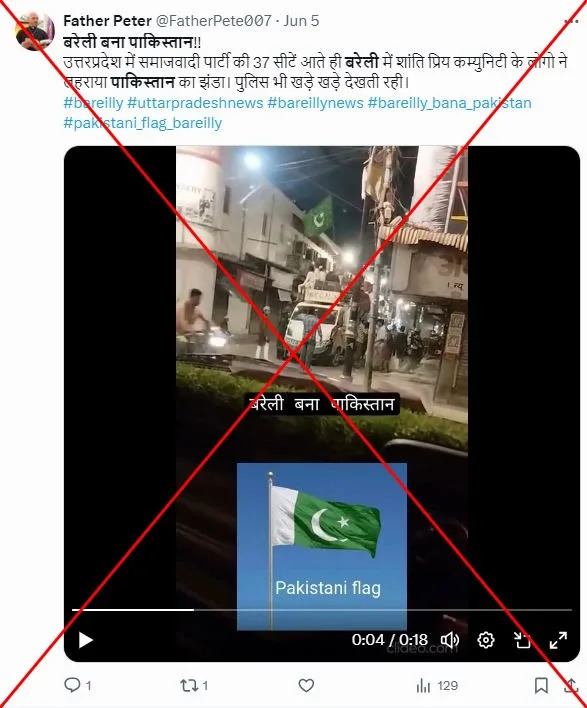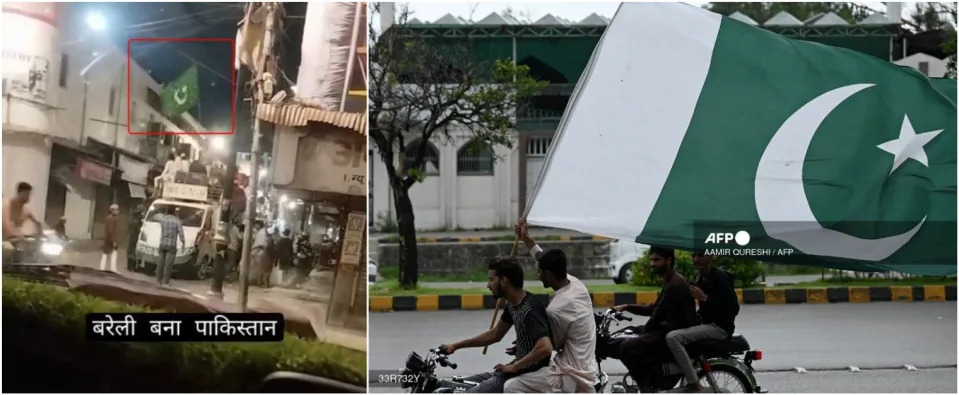PALESTINE
Remembering the Holocaust as Gaza Starves
BY ARIEL DORFMAN
JUNE 7, 2024
Facebook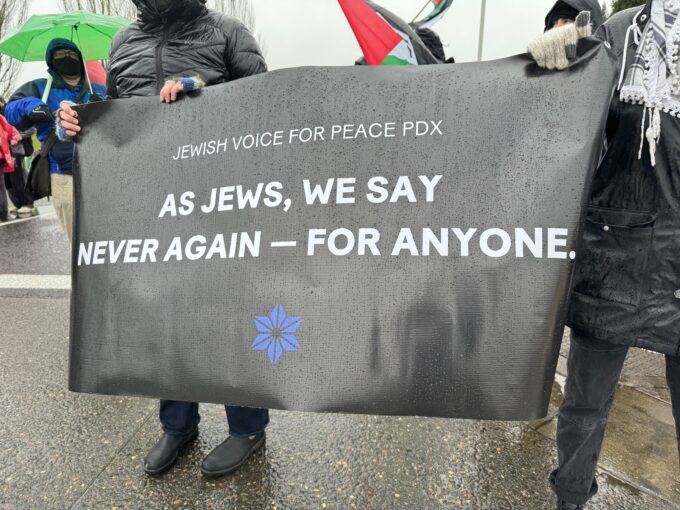
Photograph by Nathaniel St. Clair
On May 4, as war and famine raged in Gaza, Amsterdam marked Remembrance Day, an annual commemoration of those who resisted the Nazi occupation, with special emphasis from the city’s organizing committee on the Jews who perished in the onslaught. Among the dozens of ceremonies that crisscrossed the city, I joined one at the Centrale Markthal, a building that had, throughout that period of dread, housed a vast open-air market that sold food to Amsterdammers, though it is currently dedicated to spectacles, parties and gatherings enjoyed by those who, mostly, know little about that remote tragedy.
I was there at the invitation of Max Arian, an 84-year-old Dutch friend, one of the speakers that day. I had met him 50 years ago, on my first visit to the Netherlands to drum up solidarity for the Chilean resistance to the dictatorship of General Pinochet, which drove me into exile. Max, as a secular Jewish survivor of the Nazi occupation, was particularly attuned to freedom and national liberation struggles elsewhere around the world, including the struggle of the Palestinian people for a homeland and an end to the occupation. What bonded us most back then, of course, was how he identified with the promise of Salvador Allende’s peaceful revolution, which was abruptly ended by Pinochet’s 1973 coup d’etat.
During that initial, hospitable encounter, he hinted at his childhood story, but I only learned the details when, with my wife and son, I moved to Amsterdam in 1976 for a four-year stay – welcomed warmly by Max and his family, like an echo of the refuge he had been given as a young boy back in 1943.
His father, Arnold, a member of the resistance to the Nazis, had been shipped to Auschwitz, where, unbeknownst to his relatives, he had died in October 1942. Max’s mother, Rebecca, was subsequently arrested and beaten and, while in captivity, managed to smuggle a message to a relative asking that her 3-year-old son be “hidden” from the Nazis. The child spent the rest of the war with a loving Christian foster family, the Micheels, under a false identity. Rebecca herself was eventually packed into a train with thousands of other Jews and was only rescued at the last minute by men she presumed to be comrades of her husband.
She lived the next two years in safety in Limburg, not far from where her son was being cared for, though she could not know where he was for security reasons. The only sign that he was well was an unsigned letter from Max’s foster mother allaying Rebecca’s fears and mentioning how much, perhaps too much, the little boy enjoyed vlaii, a cake with green berries that was only baked in that southernmost region of the country. So Max was nearby and there was hope that they might still have a future together. And on May 5, 1945, which is still celebrated as Liberation Day in the Netherlands, Rebecca sought news of her son’s whereabouts and immediately retrieved him.
If that clue of shared food had been her sole connection to her lost child, food must have also been on her mind as a way of connecting with her parents, Philip and Mietje Witteboom. They had been spared when the Nazis occupied the Netherlands in early 1940 because Philip, with his wife’s help, ran a stall in the Centrale Markthal providing fruit and vegetables for the populace. Classified as “essential workers,” they managed to avoid deportation until finally, in 1944, they were sent to the Theresienstadt concentration camp in what is now the Czech Republic. When Max’s grandfather fell ill, he was transported to Auschwitz, where he died. Mietje outlasted her jailers, though she almost succumbed to starvation before the camp was liberated. Indeed, when Rebecca heard her mother had returned to the Netherlands and rushed to see her, she did not recognize the gaunt, skeletal woman advancing down the street, and was only able to identify her by the dress Mietje was wearing.
I imagine their elation, and also the abiding pain left behind by so many missing, murdered relatives, the extended family whose names and dates of birth and death are inscribed now on the Holocaust Memorial Wall, where, on a visit last year, I examined them, one by one, with Max by my side recounting their stories. And we talked, once more, about his own life as a “hidden” child, which had continued to fascinate me over so many decades, to the point that I had borrowed many aspects of his experience for one of the protagonists of my novel The Suicide Museum (2023).
It was not, however, until the ceremony on May 4 of this year that I learned what had happened in the aftermath of the occupation and, once again, the importance of food. Because Mietje, in addition to that solitary dress, had brought something else back from Theresienstadt: a piece of chocolate given to her by the Russian liberators of the camp. This famished woman, instead of devouring it, had kept it for her grandson, wagering that he was still alive. It offered him not only sustenance but the memory as well, because that sweet would remain for Max as the unforgettable moment when he first tasted chocolate. It had melted and then hardened over time, mixing with the tin foil, and yet it was so savory.
And more memories of food: how his grandmother and mother had, for the following decades, sold fruit and vegetables in a stall at that marketplace, despite the efforts by some other vendors to deny them that right on the grounds that the original license was in the deceased Philip’s name. This was the place where the miraculously saved Max, beloved of those two formidable female figures, had spent the rest of his childhood and adolescence, had helped to carry boxes and scrape the muck from them and even, on Mondays, work the cash register. So it was food, again, that came to the rescue of the family, providing a livelihood during difficult years of scarcity, continuing a tradition that had been in the family for generations, even if Max himself would become a famous journalist and cultural critic.
The commemoration at the former marketplace was, therefore, a way of celebrating the triumph of life over death, embodied in the fact that both octogenarian speakers, Max and another hidden child survivor, Simon Italiaander, were very much present to evoke a time when that space had resounded with the back-and-forth of merchants and wholesalers and clients and filled with the smell of cabbages and tomatoes and oranges, so Amsterdammers could eat and love, multiply and laugh, betting that life could, that it must, go on. Because Max was not alone that day of the ceremony. His (non-Jewish) wife Maartje was there, as were other members of his family – one of his three children and two of his eight grandchildren – who existed solely because he had been saved. The ghosts of the past, the dead who await some sort of resurrection in our memory, seemed to be blessing those who had managed to defy the extinction the Nazis had wanted to visit upon those innocent people.
And yet, as more and more recollections of the food that had been sold in that marketplace filled the air, as photos of that space vibrant with sustenance and nourishment circulated among the spectators, as I stared at a marvelous image of a robust, older Mietje, no longer famished, standing defiantly in the midst of endless crates of vegetables, what kept intruding on me, perversely and inevitably, was Gaza: the horror of what was going on in Gaza, what students around the world have been protesting against, including in the streets of Amsterdam. How could a state that had been founded by the survivors of the Holocaust be inflicting starvation on its Palestinian neighbors? How could its armed forces massacre children who, unlike Max, had nowhere to hide, no one to take them in? How could so many Israelis feel indifferent to such grief and afflictions – an indifference that, alas, recalled how so many Germans (and Dutch people, and millions around the world) had turned a blind eye to the sins of the Nazis?
These searing questions, which invaded me, which I could not help asking, do not undermine or disrespect the ceremony at the Centrale Markthal. They make the need to remember more relevant than ever, the certainty that never again should humanity witness terrible war crimes without demanding accountability, as the prosecutor of the International Criminal Court in the Hague has done. More relevant, also, because those who acclaim Hamas – a murderous, theocratic, misogynistic, oppressive organization that also massacres children and holds innocent hostages – those who share its dreams of ridding the region of its Israeli enemies, would do well to attend memorials like the one I was at on May 4 in Amsterdam.
This is the complicated challenge of our times: to rejoice at the wondrous survival of Max Arian, a fervent supporter of amity between Palestinians and Israelis, and at the same time condemn those persecutors who, by their current acts of terror and forced famine, are betraying the ardent memory of so many of their ancestors who died and are still crying out for peace and justice.
This first appeared on New Lines.
Teaching Palestine: The Causes and
Consequences of Organized Forgetting
BY DANIEL FALCONE
JUNE 7, 2024
Facebook
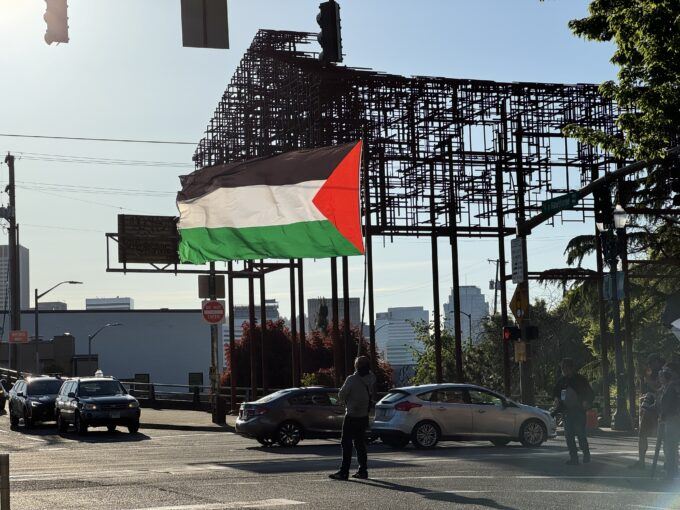
Photograph by Nathaniel St. Clair
Introduction
This writing discusses the importance of teaching the Israeli-Palestinian conflict and attempts to explain the barriers and obstacles associated with teaching it. After providing 9/11 as a case study, I emphasize why school leaders and teachers hesitate to address, or outright ignore the conflict. Additionally, it is important to understand what can be avoided and emphasized in thinking about how to treat this subject matter. Ultimately, teaching Palestine is difficult because it is the one issue where the political essence and controversy of the topic is blatantly obvious and in plain view for all to see. We must not, however, avoid teaching Palestine as well as deny students the ability to voice their concerns. I argue that the politics of organized and collective forgetting is counterintuitive to the intellectual and educational process. Teachers and educators, especially at the primary and secondary levels, must find ways to navigate this sensitive topic and overcome the perceptions and taboo nature of covering it.
Teaching 9/11
Teaching 9/11 in secondary schools from the perspective of administrators, educators, support staff and parents wasn’t the easiest thing to do in the United States on September 12, 2001. Obviously, the devastating nature of the 9/11 attacks fostered deep levels of fear, confusion, anger, and resentment. It immediately posed, not only a broad range of psychologically sensitive issues, but it was also, and remains, a contested event in terms of its meaning socially, politically, and educationally. Since schools were not in a rush to talk about 9/11 in terms of its socio-political realities and impacts on the ground, it largely treated it as an opportunity to introduce important counseling and safety and security measures. Although important, many of these responses allowed institutions convenience in collectively forgetting the event and treated it as a way of facilitating, prioritizing, and focusing on its own organizational behavior. In many respects, it was understandable. 9/11 was an extraordinary event from the standpoint of America and the West. It marked the first time the U.S. was attacked on its mainland soil since the War of 1812. It was a time of fast-moving commentary, where the moving parts offered too many opportunities for the wrong thing to be said, with no time to reflect. It was an educational mess.
Even in cases where teachers knew what to say and how to teach their students at the varying grade levels, they feared the Telephone game effect or even zero tolerance for any mistake made. In retrospect, depending on the teacher and school, a lot of important work was done in addressing 9/11 successfully. But what constituted “success?” It seemed that lessons worked best when they were organic and integrated into a specific unit as a case study in following the themes of the grade level course. This could range from Fourth Grade geography that focused on identifying a political map of the Middle East with references to natural resources and U.S. military bases, to an English class analyzing and critiquing U.S. political and presidential rhetoric, to a Global Politics class that defined terminology and official policy in a post-Cold War world. In essence, the answer educationally was to carry on teaching in bite-sized chunks. It was not “anti-American,” to provide students with explanations for why 9/11 happened, as much as some in the National Endowment for the Humanities claimed. Citing imperialism to explain world events does not weaken American resolve. As historian Eric Foner pointed out in The Nation in 2005, “explanation is not a justification for murder, criticism is not equivalent to treason, and offering a historical analysis of evil is not the same as consorting with evil.”
Why are Certain Schools Hesitant to Discuss Palestine?
Schools demonstrate hesitancy or outright ignorance for the discussion of Palestine for reasons closely associated with the problems and politics of teaching 9/11. There’s a general fear of authorizing or sponsoring a problematic statement, a concern for causing a backlash, hurt feelings, or the creation of division. Further, school leaders do not want to appear biased, upset parents or create further alienation. Why would school administrators open themselves up to starting fires where none exist? In some cases, understandably, simply lacking expertise is enough for many professionals with authority to choose silence. Also, to allow for a potential criticism of Israel might be construed as enabling antisemitism and terrorism or denying the goals of self-determination, all the while serving as a way of attracting bad press. Even more pressing – donors, lawmakers, political forces and powerful elements and features of the United States government and the interests of the state could conflict with the position the school takes.
Lastly, school leadership might often side with the dominant narrative, and feel emboldened by ruling class mechanisms that reinforce their own legitimacy. It might be important for many schools and school leaders and teachers to talk about the conflict on the most basic level while situating it as something that developed solely because of Hamas and only after October 7th .
Controlling the language is also vital and contributes to the hesitancy. By simply referring to it as Israel’s “war with Hamas,” the school absolves itself from discussing Palestinian existence on October 6th and the role of American militarism in terms of longstanding support for a “maintaining deterrence” policy on behalf of the Holy State. Whatever the reasons however, all these factors combine for an illiberal and immoral approach unfortunately when navigating educational matters regarding the conflict.
Why are Teachers Reluctant?
Teachers may show reluctance for the discussion of Palestine related to the same challenges that administrators face. Again, there’s a general fear of saying the wrong thing, a concern for causing backlash, hurt feelings, or creating division without any time for reflection. Further, teachers do not want to appear to have a bias, upset parents or create further alienation in their classes. Like the management, why would teachers engage in controversy when they do not have to? And again, in some cases, simply lacking knowledge, understanding, and materials is enough for many teachers to choose silence.
Some more conservative teachers might also prefer the dominant narrative internally, but shy away from exposing it in the face of a more liberal faculty who regret the absent narrative. Further, the more liberal teachers may choose silence after being directed to teach the Israeli-Palestinian conflict at their own risk. Or just teachers in general, may want to help any way they can but are waiting for support and resources from on high.
Things to Avoid When Teaching Palestine
There are some pitfalls, in my view, to avoid while teaching Palestine. The first is to assume there’s a magical way to teach it without bias. Teachers do not have to go as far as the late great social historian Howard Zinn in stating both the impossibility and undesirable nature of teaching with objectivity. Zinn certainly knew that objective sets of facts and truth existed, but he made a basic point about how every assertion made historically is driven by perspective. Ultimately, history is made more interesting, inspiring, and liberating when forgotten perspectives are embraced. Zinn made it clear that everyone serves a master when describing the past and present, emphasizing “you can’t be neutral on a moving train.” Another great scholar, Carlo Ginzburg, talked about the impossibility of objectivity, even with an exercise as simple as taking inventory. Of course, teachers should aim in providing balanced perspectives, dispassionate scholarship and clearly written objectives and goals but it’s best to avoid “both-siderism.” As international scholar Richard Falk has indicated, “To blame ‘both sides’ in contexts of asymmetrical responsibility such as [it] exists between Jews and Palestinians is to consciously and unconsciously divert attention away from the essential hierarchical structure of oppression and subjugation, which is the core reality confronting Palestinians. This is especially true for Palestinians living under Israeli occupation since 1967 or in refugee camps, and to a somewhat lesser extent, characterizes the lives of Palestinians living as Israeli citizens within ‘the green line’ since 1948.”
A second thing to avoid is announcing or telegraphing a talk or lesson as blatantly activist or biased and getting caught up in conflating the importance of the topic with the potential power of the language in offsetting a pursuit of social justice. It’s not that classrooms cannot promote social justice. They should and they do. It’s rather that when attempts to address topics like Palestine get perceived as inflammatory and knee jerk, even when they are on point and delivered effectively, get scrutinized and evaluated within a small window in proportion to the general population’s time and ability to understand them. Teach about Palestine, and do it well, but teach systematically and emphatically while protecting the students and maintaining a semblance of order for the sake of self-preservation.
A third area for schools to avoid is the urge to frame Palestine around identity and identity politics. While affinity groups are at times quite helpful and worthwhile, focusing on identity becomes problematic when students are taught intellectually or counseled emotionally based on their background and origin. Identity based reactions and responses to students leads the school community to presuppose that there is an “us” and “them,” on the issue, and that both sides have nearly an identical claim in coping with the dispute. Further, it also presupposes that Jewish students are automatically pro-Israel and Muslim and Arab students are inherently pro-Palestine especially when we know the former is especially untrue.
A fourth thing to avoid is the failure to separate and define terms. “Israel,” “Zionism,”, “Apartheid,” “Jewish,” “Palestinian,” “Gaza,” “West Bank,” “Intifada,” and “Hamas,” are all individual terms, each with separate meanings and definitions. These terms, although obviously related to one another, cannot be combined, or used interchangeably within the context of the conflict without creating massive amounts of distortions while fostering an oversimplified paradigm of “good” and “evil.” Further, it’s damaging to treat the topic as if “everybody does it.” When this line of thinking is carried out, it helps in “creating a blank slate on which subsequently to etch a new nation’s imprint,” says Roger Heacock of Birzeit University.
Lastly, teachers should not assume that students don’t know anything on the topic and are unable and automatically confused when talking about it. Undoubtedly, young people will need great amounts of time preparing, studying, analyzing, and articulating a perspective on most complex topics, but it is the reason why they are in school in the first place, and we have all seen students exceed our initial expectations.
What Should Be Emphasized?
In my estimation, an essential and incredible component of any Middle East lecture and lesson is teaching the role of the United States and its special relationship with Israel. Since Israel is a key ally from a strategic and geopolitical standpoint, it’s helpful to discuss that Israel acts in accordance with U.S. funding, planning, direction, and permission in most cases. Reminding students this fact alone disarms the sensitive nature of singling out Israel, a suspicion that pro-Israeli people will almost rightly have, if the teacher does not specify the pivotal American role and culpability. The U.S. provides to Israel an annual military budget of roughly 3 billion dollars and sides with them unambiguously in world affairs. It is not fair to say that Columbia University students, for example, ignore human rights tragedies elsewhere at the expense of charting U.S./Israel crimes while ignoring, take say, the Chinese assimilation of Tibet. The reason that resistance and social movements are so prevalent around Israel, perhaps more so than other conflicts around the world is because of 1) young peoples’ knowledge of the cultural genocide of the American Indian gained in their formative years of schooling, 2) U.S. student understanding of the central event of the 20th century, The Holocaust and progressive Jews articulation of Never Again For Anyone, and 3) acknowledgment of United States foreign policy and its inextricable links to Israel and vital Middle East interests.
The best ways to teach about the conflict, in my estimation, mirror the effective ways of the teaching of American slavery. American slavery is best taught when teachers: 1) calibrate the lesson to fit their audience (you must know your audience), 2) privilege the voices of people directly involved in the tragedy with the utilization of primary source material, and 3) making sure the teaching is organic and fits into the rhythm and momentum of the normal flow of the school day and curriculum. For years now, teachers have successfully constructed and delivered controversial lessons on slavery, war, genocide, imperialism, and human rights abuses by following precise terminology and the definitions of terms found in references to the scholarly literature. They are not easily taught, but they have been successfully taught and there’s no reason to think that sensitive topics such as 9/11 or the Israeli-Palestinian conflict cannot be as well. Teachers could ask students to make a household budget for working class Israelis and Palestinians compared to more privileged sectors. Teachers could compare the construction and effectiveness of Israel’s superhighways that connect settlers to major cities within minutes while it takes Palestinians hours to move from place to place on unfinished roads while negotiating checkpoints. Teachers could have students compare educational facilities in the region or simply analyze charts that show Israel’s financial backing from its superpower patron, the U.S. As teachers, we must normalize the teaching of controversial subjects and embrace complexity as an investment in student learning. If we don’t provide students a steady diet of information as well as consistency and strategies to think critically, we cannot expect the “big lesson” mentality to deliver any reasonable or favorable outcome or impact learning positively.
The Consequences of the Violence of Organized Forgetting
Academic Henry Giroux has pointed out that, “education can be both the basis for critical thought and a site for repression.” He states that, “unfortunately, we live at a moment in which ignorance appears to be one of the defining features of American political and cultural life.” “Ignorance,” he states, “has become a form of weaponized refusal to acknowledge the violence of the past [and present], and revels in a culture of media spectacles in which public concerns are translated into private obsessions, consumerism and fatuous entertainment.”
Here, the schools are failing students miserably if they fail to listen to them or acknowledge the mainstream critiques of the U.S. and Israel related to proportionality as a guideline in war. Yes, young learners will want to discuss the important issues of the day and will make attempts to attend rallies, post signs, issue statements and have thoughts, opinions, and attitudes on monumental events. As educators, it is our role to support them in these events, not in terms of condoning, authorizing, and sponsoring them, but in terms of providing realistic spaces of expression and facilitation and providing them validation and respect for taking stands on issues that require higher ordered thinking and strong senses of citing injustice.
What are “Good” Sources for Studying Israel-Palestine and Which Ones are “Bad?”
First, all teachers interested in learning which information is most helpful for gathering content for students in middle school and high school should read Michael Scott-Baumann’s The Shortest History of Israel and Palestine: From Zionism to Intifadas and the Struggle for Peace. It is incredibly well written and concise and offers a clear chronology and glossary of key terms and key people with an extraordinary bibliography. Solid lesson plans could develop rather easily by using this outstanding source. Overall, I would hesitate to form judgments and opinions of sources and places for information regarding Palestine and its relationship with Israel in terms of good and bad. I’d rather look at information on a continuum that ranges in terms of format. In my view, it’s a good practice to use different types of source material ranging from primary, secondary, and tertiary data. From there, one should generally evaluate information in terms of its authorship, publication, profession, or political philosophy. Usually, not always, publications and pronouncements coming from academic press books and scholarly journals have fairly high levels of reliability. It does not mean they shouldn’t be scrutinized or deconstructed. Information from think tanks, policy analysts, and trade press books are also helpful but the need to pull them apart from their institutional or corporate obligations may be even greater. Lastly, the elite agenda setting media – print (i.e. Washington Post’s KidsPost, New York Times), digital and televised, perhaps needs the greatest amount of time to disentangle. None of these are wholly good or bad in any one instance, but most sources of information are ripe for deconstruction, which is a very valuable exercise.
A Very Short List of Some Suggested Authors and Sources of Information
Ahmad, Muhammad Idrees
Barghouti, Mariam
Barsamian, David
Bennis, Phyllis
Carey, Roane
Chomsky, Noam
Davidson, Lawrence
Falk, Richard
Kelley, Robin
Khalidi, Rashid
Kletter, Raz
Pappe, Ilan
Said, Edward
Scott-Baumann, Michael
Zunes, Stephen
+972 Magazine
Behind the News
Christian Science Monitor
CounterPunch
Current Affairs
Democracy Now!
FAIR
Foreign Policy in Focus
Haaretz
Informed Comment
Jacobin
Truthout
Daniel Falcone is a teacher, journalist, and PhD student in the World History program at St. John’s University in Jamaica, NY as well as a member of the Democratic Socialists of America. He resides in New York City.
If one were to argue that a top Spanish government official would someday declare that “from the river to the sea, Palestine would be free”, the suggestion itself would have seemed ludicrous.
But this is precisely how Yolanda Diaz, Spain’s Deputy Prime Minister, concluded a statement on May 23, a few days before Spain officially recognized Palestine as a state.
The Spanish recognition of Palestine, along with the Norwegian and Irish recognition, is most important.
Western Europe is finally catching up with the rest of the world regarding the significance of a strong international position in support of the Palestinian people and in rejection of Israel’s genocidal practices in occupied Palestine.
But equally important is the changing political discourse regarding both Palestine and Israel in Europe and all over the world.
Almost immediately after the start of the Israeli war on Gaza, some European countries imposed restrictions on pro-Palestinian protests, some even banning the Palestinian flag, which was perceived, through some twisted logic, as an antisemitic symbol.
With time, the unprecedented solidarity with Israel at the start of the war, however, turned into an outright political, legal and moral liability to the pro-Israel western governments.
Thus, a slow shift began, leading to a near-complete transformation in the position of some governments, and a partial though clear shift of the political discourse among others.
The early ban on pro-Palestinian protests was impossible to maintain in the face of millions of angry European citizens who called on their governments to end their blind support for Tel Aviv.
On May 30, the mere fact that French private broadcaster TF1 hosted Israeli Prime Minister Benjamin Netanyahu led to large, though spontaneous, protests by French citizens, who called on their media to deny accused war criminals the chance to address the public.
Failing to push back against the pro-Palestine narrative, the French government has, on May 31, decided to disinvite Israeli military firms from participating in one of the world’s largest military expos, Eurosatory, scheduled for June 17-21.
Even countries like Canada and Germany, which supported the Israeli genocide against Palestinians until later stages of the mass killings, began changing their language as well.
The change of language is also happening in Israel itself and among pro-Israeli intellectuals and journalists in mainstream media. In a widely read column, New York Times writer Thomas Friedman attacked Netanyahu late last March, accusing him of being the “worst leader in Jewish history, not just in Israeli history”.
Unpacking Friedman’s statement requires another column, for such language continues to feed on the persisting illusion, at least in the mind of Friedman, that Israel serves as a representation, not of its own citizens, but of Jewish people, past and present.
As for the language in Israel, it is coalescing into two major and competing discourses: one irrationally ruthless, represented by far-right Ministers Itamar Ben-Gvir and Bezalel Smotrich, in fact, by Netanyahu himself; and another, though equally militant and anti-Palestinian, which is more pragmatic.
While the first group would like to see Palestinians slaughtered in large numbers or wiped out through a nuclear bomb, the other realizes that a military option, at least for now, is no longer viable.
“The Israeli army does not have the ability to win this war against Hamas, and certainly not against Hezbollah,” Israeli Army Reserve Major General Yitzhak Brik said in an interview with the Israeli newspaper Maariv on May 30.
Brik, one of Israel’s most respected military men, is but one of many such individuals who are now essentially repeating the same wisdom.
Strangely, when Israel’s Minister of Heritage Amihai Eliyahu suggested the “option” of dropping a nuclear bomb on the Strip, his words reeked of desperation, not confidence.
Prior to the war, the Israeli political discourse regarding Gaza revolved around a specific set of terminology: ‘deterrence’, represented in the occasional one-sided war, often referred to as ‘mowing the lawn’ and ‘security’, among others.
Billions of dollars have been generated throughout the years by war profiteers in Israel, the US and other European countries, all in the name of keeping Gaza besieged and subdued.
Now, this language has been relegated in favor of a grand discourse concerned with existential wars, the future of the Jewish people, and the possible end of Israel if not Zionism itself.
While it is true that Netanyahu fears an end to the war will be a terrible conclusion to his supposedly triumphant legacy as the ‘protector’ of Israel, there is more to the story.
If the war ends without Israel restoring its so-called deterrence and security, it will be forced to contend with the fact that the Palestinian people cannot be relegated and that their rights cannot be overlooked. For Israel, such a realization would be an end to its settler-colonial project, which began nearly a hundred years ago.
Additionally, the perception and language pertaining to Palestine and Israel are changing among ordinary people across the world. The misconception of the Palestinian ‘terrorist’ is being quickly replaced by the true depiction of the Israeli war criminal, a categorization that is now consistent with the views of the world’s largest international legal institutions.
Israel now stands in near-complete isolation, due, in part, to its genocide in Gaza but also to the courage and steadfastness of the Palestinian people, and to the global solidarity with the Palestinian cause.
Dr. Ramzy Baroud is a journalist, author and the Editor of The Palestine Chronicle. He is the author of six books. His latest book, co-edited with Ilan Pappé, is Our Vision for Liberation: Engaged Palestinian Leaders and Intellectuals Speak Out. His other books include My Father was a Freedom Fighter and The Last Earth. Baroud is a Non-resident Senior Research Fellow at the Center for Islam and Global Affairs (CIGA). His website is www.ramzybaroud.net.
The Future of UNRWA and Hamas in Gaza
by Rick Sterling / June 4th, 2024
Peter Ford has an extensive career in the UK Diplomatic Service, including serving as UK Ambassador to Bahrein and then Syria. He then served for many years as Special Representative to the Commissioner General of UNRWA – the United Nations Relief and Works Agency. In this interview, he discusses the background, importance, and how Israel wants to “replace” UNRWA.
Rick Sterling: How did you come to work for UNRWA, the United Nations Relief and Works Agency?
Peter Ford: Well, ever since I was a young cub Arabist, I have been exposed to the work of UNRWA. My first job was in Lebanon. I saw its work firsthand in the Palestinian camps there. Every exposure I had increased my admiration for the organization. As I approached retirement, I was attracted to the idea of working for UNRWA.
By chance, I read in The Economist magazine that UNRWA was looking to create a new post, a fundraiser in the Arab world. And the requirements were diplomatic experience and knowledge of the Arabic language. Wow, I thought, this is tailor-made for me. And so it proved. I think I was chosen from a shortlist of one.
Knowledge of Arabic was a great help. I didn’t benefit from any support from the British government, I have to say. And that is an issue with UNRWA. Many of the top jobs are earmarked for particular countries. So the Commissioner General, by custom, is always either a European or American. And the deputy head of UNRWA, Deputy Commissioner General, is also an American or a European.
RS: What does UNRWA do in Gaza and beyond? How big an organization is it?
PF: UNRWA began operations in 1950 in the aftermath of the conflict in Palestine that led to the creation of Israel and the expulsion of half of Palestine’s population. And the mandate given by the UN General Assembly to UNRWA was to look after these refugees and very significantly their children. The status of refugees was defined as people who were being helped by UNRWA and their descendants. And this became very important because most refugees around the world from other countries, the status of refugee is not handed on father to son or daughter. But in the case of Palestine refugees, because of the special circumstances where they lost their country, their homes and their livelihoods, they were accorded permanent refugee status for as long as they were unable to exercise their right of return.
As the years passed, this became very important politically. And as it became more difficult to envisage the right of return, the mere existence of UNRWA and its according refugee status to several million Palestinians perpetuated the right of return. And this became a major problem with Israel.
From 1950, UNRWA’s mandate has been to look after the relief and welfare of the refugee Palestinians in terms of education, healthcare, social services, the refugee camp infrastructure, houses, the social services for the vulnerable, and some microfinance and job creation in recent years.
The core activities are the schools. There is a huge network of UNRWA schools and medical centers. And these are spread across the Middle East in Palestine itself, in the occupied West Bank, in Gaza, in Syria, Lebanon, and Jordan.
Overall, there are almost 6 million Palestinians who qualify for UNRWA support. And of those, about 1.9 million are in Gaza, and about half a million are in Syria, and the rest are shared between Lebanon and Jordan. So it’s serving almost as a micro-state. Six million people is a big responsibility and one that requires a lot of coordination with the host authorities.
Of these, the most problematic by far is Israel as the occupying power in the West Bank and Gaza. Relations with other governments have by and large been cooperative. There is occasional friction, but on the whole there are very good relations. It’s often forgotten that Jordan and Lebanon and Syria give a lot of support in addition to the support that UNRWA gives. And they host these millions of refugees without complaint.
RS: Doesn’t UNRWA in some ways relieve Israel of responsibility for the people that it’s got under its control?
PF: Well, yes, it does. Under international law, the power that has physical control as the occupying power has responsibility to provide the basic services which UNRWA provides: healthcare, education, and housing. So this burden is taken off the shoulders of Israel. If UNRWA didn’t exist, the Israelis would have to carry the burden of looking after all those millions of refugees. But you’d be mistaken if you thought they were grateful at all.
RS: A few months ago, Israel made accusations and somehow persuaded several countries to stop their donations to UNRWA. What do you make of this?
PF: Well, this was a fabricated story the Israelis came up with about three months after the alleged events, they came up with a story that staff had been involved in the 7th October breakout and had carried out crimes. This was announced with great fanfare. Knee-jerk reactions followed on the part of the usual suspects. Americans, Europeans and Britain suspended their vital payments to UNRWA.
UNRWA is a beggar. It’s an international beggar. It receives almost nothing from central UN funds. The rest is voluntary, which makes life very difficult for UNRWA. It has to go cap in hand and cannot afford to upset any of its important donors. And that means the United States, the EU, and Britain.
In fact, my job, the reason I was recruited, was to try to diversify UNRWA’s funding so that it could be a little less dependent on the Western powers. And I had some success in that, garnering about half a billion dollars of contributions from mainly Gulf and North African countries.
But to go back to your question, Israel came up with this story. Just on the basis of the Israeli accusations, the Western powers cut the aid. Unwisely, to my mind, UNRWA immediately suspended the staff who were accused. This only tended to give credence to the Israeli claims. But this shows the weakness, the political weakness, of UNRWA. It finds it very difficult to stand up to bullying by these powerful countries, by the United States and Europe.
Eventually, about three weeks ago, an independent investigator, a former French foreign minister, carried out an investigation and concluded that there was no proof. The Israelis were unable to provide any proof to back up their allegations. And most countries are now going back or have already gone back to lift their suspension.
RS: I think even the original accusations were that some 12 or 13 individuals from a staff of 13,000 had participated in October 7. And now even that’s been discredited, you’re saying?
PF: Yes, that’s exactly what has happened. It would have been surprising, actually, if there hadn’t been some younger employees, but the Israelis couldn’t provide evidence for a single one.
RS: Yes. And I understand that UNRWA gives the names of all their employees to Israel every year for them to almost vet the list.
PF: That’s right. Israel has an amazing oversight of the activities of UNRWA, at least as far as the occupied territories are concerned. Over 90% of the employees of UNRWA are Palestinians, the vast majority of Palestinian refugees themselves. But the hierarchy is Western or non-Palestinian. Anyway, as I mentioned earlier, the top employees, the director general and immediate close staff are European or American, but over 90% of the staff are Palestinians. And that is something the Israelis don’t like either. The Palestinians have agency in the sense of some measure of control over their lives.
RS: I have the impression that UNRWA has done a very good job in the education field. And that, again, is something Israel doesn’t like.
PF: Yes, Israel doesn’t like the fact that so many Palestinians have received a good education under UNRWA’s supervision. Many Palestinians have gone on to higher education, to distinguished professorships having emerged from UNRWA schools in the camps over the years.
It’s a badge of honor for a Palestinian to have passed through an UNRWA school. In Syria, where I was, Syrians wanted to enroll in UNRWA schools. It was one of the bribes that we could use to leverage favors from the Syrian government. So that’s testimony to how good these schools are and their reputation.
A bone of contention with the Israelis concerns what’s taught in the schools. And again, the Israelis make lurid, unsupported claims about the pupils being taught Palestinian propaganda. And this is just fake news. In the UNRWA schools, they follow the curricula of the Arab country or authority where they are.
So UNRWA schools follow the curriculum of the Palestine Authority, which is vetted by Israel, of course. In Jordan, they follow the Jordanian curriculum, etcetera. But the Israelis love to make up any propaganda they can about UNRWA, and they try to limit UNRWA funding. They use any method to try to stymie, block, or make more difficult the operations of UNRWA. They really do want to bring an end to this agency.
In a way, you can understand it because the agency is synonymous with Palestinian rights and in particular with the right of return. This implies the Palestinians have a right to return to those towns and villages from which their forebears were expelled back in 1948.
So this is why UNRWA is a thorn in the side of Israel and one they would love to destroy completely. Their ambition has no limit. And we’ve seen this during the Gaza crisis. They have used this to try to exclude UNRWA, make propaganda against UNRWA, and create substitutes for UNRWA. Creating a substitute is the latest strategy. The organization that had some of its staff killed by the Israelis is one of these. In fact, that organization was particularly friendly to the Israelis and the Israelis facilitated its entry to Gaza. And it was a tragic irony that the Israelis ended up killing employees of this agency, World Central Kitchen. The Israelis aim to replace UNRWA with organizations they can control like this. That’s part of the plan with the port to be created by the Americans and the British in northern Gaza. It would be serviced by organizations other than UNRWA.
RS: What’s the status of UNRWA in Gaza now? Is is able to operate as in the past, or are they being restricted?
PF: UNRWA is very much restricted as far as traditional activities are concerned. The healthcare clinics, hospitals and schools have been either destroyed or badly damaged or they don’t have equipment or they don’t have medicines. So there’s no schooling going on except in home environments. But on the other hand, UNRWA is busier than ever on relief services. It’s more like 1950 when UNRWA was providing tents and the most basic water and food supplies. You’ll recall that UNRWA stands for UN Relief and Works. And by “works” was meant education, healthcare, and housing. Today UNRWA is doing far more relief than works.
RS: We’ve seen pictures of thousands of tents to temporarily house the hundreds of thousands and even more than a million refugees. Have those been set up by UNRWA?
PF: Yes, and temporary housing also happens in the UNRWA schools. These are now occupied by many thousands of families. The schools are being converted into accommodation. And the healthcare centers, to the extent it’s physically possible. And the hospitals, they’ve also been converted into temporary housing. There are other UN agencies involved. It wouldn’t be fair not to mention the UNICEF, the Children’s Agency, the food agency, all the international agencies are there.
RS: What do you think will be UNRWA s role in the future?
PF: In the future? Well, in a single sentence, its role will be to run Gaza alongside Hamas. Now, that’s controversial, obviously. But I think that the day after will look very much like the day before. I don’t think the Israelis will succeed in crushing Hamas.
Eventually the Israelis will be forced to withdraw as they have been forced to withdraw in the past. There will be vastly more reconstruction to do. But UNRWA has the experience and the workforce in place. Any outside agency would have to bring in thousands of workers.
And after the Israelis leave, of course, the authorities, which are bound to be the people with guns, the resistance, will be more than glad to go back to the old basis of effectively a condominium with the UN agencies. And this is as it should be.
RS: Some people think that October 7 and what’s happened since then has really changed things. Is that your perspective also?
PF: Wishful thinking is not a good basis for policy. And I’m afraid the Israelis, indulged by their Western backers, go in a lot for wishful thinking. Though in the last couple of months, one hears less about the day after. It seems the Israelis are focused on just how the hell can they get out, how can they extricate themselves without massive humiliation? There’s very little chatter now about bringing in an Arab defense force to police the Gaza Strip or any nonsense like that. So I believe there will be no alternative. The day after will look like the day before.
RS: What do you think of the latest (May 31) Biden plan?
PF: Better late than never. As much by what it omits as by what it says. The plan recognizes that Israel must withdraw with Hamas undefeated and set to resume control of Gaza. All fantasizing about ‘eliminating’ Hamas, about setting up a quisling regime, about an Arab peacekeeping force, about two states – all dropped. It is an unspeakable, unbearable tragedy that it took this amount of killing, maiming and mindless destruction with American bombs to come to this obvious realization
Can Victims Transform Co-annihilation into Co-existence?
by Sean Chabot / June 7th, 2024
The history of the Holocaust was an important part of my childhood in Holland. One of my best friends was a Jewish-Dutch boy who lived in the house behind mine. I knew that I couldn’t play with him on Saturdays, because he had to go to Hebrew school. I also remember that he had certificates on his bedroom wall indicating how many trees he had funded in Israel. A few years later, when I studied the Holocaust in school and read books on the Nazi occupation of the Netherlands, I knew that as a “bystander” my sympathies were with Jewish “victims” and my antipathies with Nazi “perpetrators.”
This moral clarity gave me a sense of comfort: I knew I didn’t want to be friends with the German classmate down the street and got mad at my Mom when she brought my bike to the local bike shop, because its owner was supposed to have been a Nazi sympathizer. I also hoped that, if I had lived during the Holocaust, I would have been the kind of person to actively support persecuted Jewish families, and that I would have joined the Dutch resistance against Nazi occupation instead of being a passive bystander.
Imagine my shock when, as a teenager in high school, I realized that the tables had turned. Watching and reading the news on the First Intifada in 1987, I couldn’t believe that the Jewish people I had admired for so long now waged war against persecuted Palestinians, who obviously lacked the military might of Israel. I was confused and didn’t know how to respond to this reversal in roles. My sense of moral clarity was shattered: How could victims become killers? How could the persecuted become persecutors?
I believe that this question of victims, perpetrators, and bystanders remains crucial for thinking about today’s Israel-Palestine catastrophe. While Jewish people claim essential victim status based on a long history antisemitism, pogroms, and most recently the Holocaust, does this mean that they can’t be perpetrators of genocide today? How do we, as bystanders in the US empire, enable Israel to claim victimhood after October 7 and to justify its crimes against humanity in the name of self-defense since then? Aren’t Palestinian civilians in Gaza and other occupied territories the victims now? Or are they all accomplices and potential recruits of Hamas perpetrators of terrorism, forcing Israel to protect its population from this existential threat? And can we really be innocent bystanders to what is happening in Gaza, especially after the recent invasion in Rafah? Or are we all, as funders and participants in the US-led imperial war machine, inevitably implicated in the ethnic cleansing of Palestinians and therefore collectively responsible for its perpetuation?
Instead of treating victim, perpetrator, and bystander as separate categories, I want to emphasize the complex relationships and entanglements among these categories. One the one hand, it is important to recognize Palestinians as current victims, hold Israel accountable for perpetrating genocide, and reflect carefully on our responsibility as implicated bystanders. On the other hand, we also need to think beyond recent events and consider wider systems of settler colonialism to better understand the catastrophic cycles of violence in Palestine and know how to make humane coexistence in social relationships, community life, and political decision-making possible.
This raises more urgent questions: What would it take to think and imagine beyond the victim-perpetrator divide? How could we envision livable co-existence among Jews and Palestinians based on careful judgment rather than on perpetual revenge driven by mutual victimhood?
First of all, we need to recognize that the dichotomy between “victim” and “perpetrator” can be used by political authorities to serve their own interests and continue the cycle of violence in Palestine. We also need to consider our role as “implicated bystanders” in perpetuating the victim-perpetrator binary. So, the fact that Israel is currently a perpetrator of genocide does not make the Jewish people any less a victim of the Holocaust or ongoing antisemitism. And the fact that Palestinians have a right to armed resistance as victims of colonial occupation and extermination does not condone the brutality of Hamas perpetrators against Israeli civilians on October 7. In addition, as bystanders, we in the U.S. must take responsibility for avoiding conformity with our government’s and mass media’s complicity with genocide in Gaza. Only careful thinking and judgment by human beings around the world can produce action toward ending the cycle of violence and victimhood.
Jewish political theorist Hannah Arendt’s ideas about thinking and judgment are especially relevant here. For Arendt, thinking is a dangerous activity because it allows all of us to critically examine dominant ideologies and popular opinions in society. It pushes us to engage in inner dialogue with ourselves on urgent political issues, and to question widely-accepted concepts like victim, perpetrator, bystander, security, free speech, self-defense, and terrorism. Thinking also shapes our moral conscience concerning what is right or wrong and our political perspective on how to act. It prepares us for moral and political judgment based on independent reflection, and for collective action that opens up new possibilities—what Arendt calls new beginnings.
Second, we should admit that legal justice and abstract fairness are not enough to resolve conflicts like that between Israel and Palestine. The Nuremberg Trials after World War II, for example, provided concrete evidence of Nazi crimes, convicted 22 prominent Holocaust perpetrators, and legitimized the use of international criminal law against future perpetrators of crimes against humanity. But they have done little to prevent or stop genocides and war crimes by nation-states since then. Similarly, calls for fairness promise to repair past wrongs and reconcile present conflicts. Truth commissions, for instance, invite both victims and perpetrators to share stories of suffering and transgression in the hope that forgiveness can restore humane relationships and discourage bloody revenge. The case of South Africa shows, however, that truth commissions often reinforce victim and perpetrator identities, while lacking the power for enduring structural transformation. And if international institutions and laws can’t even force Israel to accept a ceasefire, why would fairness be able to do so?
Finally, as implicated bystanders in the United States, we need to create ways to act against the US empire’s support for Israel’s genocidal colonialism and to act for new beginnings—for new initiatives toward co-existence among Jewish and Palestinian people, as well as among other nationalities, social groups, and struggles for liberation. While it is crucial to provide humanitarian aid to all victims, we also need to highlight how Jewish rulers and settlers have pursued Israel’s settler-colonial project to displace and erase Palestinians from their land, and how Palestinian people have never given up their right of return and have always resisted colonization with unarmed as well as armed strategies—like other colonized and indigenous populations around the world. Instead of avoiding conflict by staying silent, we need to use our moral imagination and political capacity to resist conformity with mainstream media’s manufacturing of consent and complicity with support for genocide among political, economic, and academic elites. And as Palestinian-American intellectual Edward Said insisted, we also need to create and inhabit social spaces for learning and meeting across differences, and for risky experiments with co-existence among unique human beings and communities confronting common existential conditions and political challenges.
This brings us to the question: What can we learn from promising experiments with coexistence among Jewish and Palestinian people in occupied territories known as Israel?
One promising initiative is The Parents Circle—Family Forum, a joint Israeli-Palestinians organization with over 700 families that have lost an immediate family member in the colonial conflict. This organization originated in 1995 and hosts dialogue meetings where Israeli and Palestinian parents tell personal stories of bereavement in Hebrew, Arabic, and English, promoting interpersonal reconciliation and sustainable peace instead of hatred and revenge in relationships across families, communities, and cultures. Instead of relying on governments or leaders for solutions, they focus on listening, mutual understanding, and joint action guided by the kind of moral-political thinking and judgment favored by Hannah Arendt. These bereaved families show how capacities for co-existence can emerge from sharing experience and stories of common suffering as unique human beings, not as opponents identified as “victim” or “perpetrator.” Although interpersonal empathy still needs to be translated into political decolonization, it is not surprising that Israel’s Education Ministry banned the Parents Circle from schools last year, despite protest of principals at these schools.
Another inspiring association is the Israeli Committee Against House Demolitions (ICAHD), which was founded in 1997 and involves critical Jews in Israel, US, UK, Finland, and Germany seeking to end Israel’s apartheid policies and settler-colonial project by mobilizing against Israel’s demolition of Palestinian homes and engaging in anti-colonial political education. While confronting Zionism as a settler-colonial ideology for ethnic cleansing of the Palestinian people, the ICAHD also calls for the creation of a single, decolonized democratic state with equal rights and dignity for Jewish, Palestinian, Christian, and other inhabitants. The ICAHD demonstrates how common struggles against colonial systems and for political co-existence can spark new beginnings toward peace and justice in Palestine.
And most importantly: What can we learn from student encampments in the US and around the world about how co-existence can start at the grassroots level and grow translocally?
The Gaza solidarity encampments that started at Columbia University and continue spreading across the globe highlight yet again how the victim-perpetrator dichotomy has been weaponized by ruling institutions and elites. For example, university administrations claim that Pro-Israel Jewish students who feel unsafe are “victims,” while anti-Zionist Jewish students resisting peacefully—and facing violent assaults by pro-Israel activists—are “perpetrators.” Politicians and mainstream media portray Palestinian students and faculty as “perpetrators” of speaking up about inhumane conditions in Gaza and standing up to heavily-armed police forces, while wealthy Jewish alumni withdraw donations as “victims” of antisemitism. Initially, these attempts at distortion and intimidation kept many audiences on the sidelines, but increasingly people throughout the world are waking up to calls for ending genocide in Gaza and Palestine.
Thankfully, the lived experiences and realities of student encampments are very different from the mainstream media’s delusional images and commentaries! Student encampments have become common spaces for political education and co-existence among Jewish, Palestinian, and other students—as well as among faculty and other activists—in solidarity with families and communities in Gaza. They are places where participants push university administrators to disclose and divest from corporations associated with Israeli genocide; perform new ways of living together across violent binaries; and put bodies on the line to dismantle the US empire’s war machine in Palestine, in the US, and around the world. Students in solidarity with Palestinian struggles for liberation are showing all of us how open-minded thinking, moral judgment, and political will can guide mass movements that eventually end military atrocities like the Vietnam War and racist governments like South Africa’s apartheid regime.
I believe that as university students and faculty members—and as human beings in our shared world—we are responsible for using our intellectual and ethical capacities to make courageous choices about how we respond to urgent situations that confront us. In my view, the ongoing genocide in Gaza is the most urgent situation in the world since the Holocaust. We cannot afford to blindly obey our rulers and end up on the wrong side of history. Passivity or silence in times like these is betrayal—as both Martin Luther King, Jr. and Audre Lorde demonstrated. Trapping ourselves in fixed identities as victims, perpetrators, and bystanders is not a viable option. And there are no guarantees that our ideas and actions will produce the solutions we want. Our only choice is to draw on common suffering to create common struggles and common spaces for coexistence with former enemies, other communities, and ecosystems. As a child, I hoped that I would become the kind of person who feels and enacts solidarity with Jewish people facing death in concentration camps. Today, I know that empathy with victims in Gaza is not enough. Our future depends on how I, how you, how everyone responds to one question: Coannihilatio
or Coexistence?
Sean Chabot is a professor of Sociology at Eastern Washington University. He published a book on "The Transnational Roots of the Civil Rights Movement" (2012) and is working on a manuscript on repertoires of decolonizing resistance. Read other articles by Sean.
Understanding the Fate of the Palestinians
Paving a Road to Liberation
by Dan Lieberman / June 7th, 2024
Since day one of their entrance, the Zionists seized opportunities to enhance their strength and further their agenda, extending a single settlement in Ottoman Palestine to complete control of Palestine. Ten pioneers from Russia acquired 835 acres of land southeast of present day Tel Aviv and established Rishon Le-Zion (“First in Zion”). Founded in 1882, the settlement has grown to a city of approximately 260,000.
The “First in Zion” symbolizes the Zionist thrust — pretend innocence, harden hearts, brutalize innocent inhabitants, and turn oppression of others into security needs for yourself. After the Zionists gained overwhelming power, they used power for severe oppression, to steal more lands, manufacture huge bombs to overcome fists and rocks, and to terrorize a population. Those who contended the oppression were called terrorists. The smiles on Zionists’ faces come from convincing a complacent, unknowing, and confused world to accept ethnic cleansing, apartheid, and genocide as daily happenings that only Zionists are permitted to perpetrate.
The questions often asked and never answered are, “How did the Zionist Jews get away with this open air and available for all to see genocide, and why has there been no valid response to stop it? Millions of valiant people struggle each day to change the situation and bring peace and justice to the Middle East, and these efforts have not succeeded in halting the onslaught, not even reducing it by one Band-Aid.
Shocking is the cowardice of prominent and respected persons, such as Barack Obama, who do not speak out forcibly about the genocide in Gaza. Puzzling is that the United States entered World War II to defeat a state claiming ethnic superiority, exhibiting ultra-nationalism, engaging in irredentism, practicing militarism, and perpetrating genocide. For decades the United States has supported another state that claims ethnic superiority, exhibits ultra-nationalism, engages in irredentism, practices militarism, and perpetrates genocide. The US has seen its World War II battle that defeated Nazi Germany give rise to an extremist Zionism, with innocent European Jews and now innocent Palestinians the victims of the battle. Defeat of a despised international opponent has resurrected a lookalike and despised international opponent.
Building an effective strategy against an opponent requires understanding the opponent’s strategy. The Zionist Jews have major strategies — never compromise, continually pursue the agenda, pay no attention to those who cannot or will not militarily intercede (how many armed divisions does the Vatican have?), turn arguments against them into arguments against the accuser (using debts as collateral), and use to advantage the conditioning of minds that the Holocaust and false charges of anti-Semitism have provided. These strategies are apparent in the war on the Gazans and the reactions to the genocide.
PM Netanyahu stated that Israel did not start this war and did not want this war. Although the genocide of the Palestinians started in 1948, when Zionist militias were already cleansing the land and telling the world they were being attacked, Netanyahu made it seem that a past did not exist and a new war had started. PM Netanyahu tells us that a relatively small contingent of lightly armed Hamas militias want to kill all Jews, conquer all Israel, and expel all Jewish inhabitants. This invisible army is prepared to overcome a heavily armed and formidable army that, without much resistance, does to the Palestinians what Netanyahu claims little Hamas wants to do to the Jews — daily massacres, seizing lands, ethnic cleansing, and constant oppression. Israel took advantage of the October 7 attack to hasten the genocide of the Palestinians and disguise the massacre as a legitimate defense.
The Zionist strategy demonstrated its effectiveness when the international Zionist organization persuaded the US Congress to inform the world that the campus protests against US assistance to the genocide of the Palestinians were anti-Semitic conspiracies. Periodic television ads that attempt to validate the anti-Semitic conspiracy and plead not to make Jews victims of the protests followed the diabolical plot. The TV ads indirectly tell us not to give overwhelming importance to the genocide of the Palestinians; more important is that the protests make Jews feel uncomfortable because a few protestors accuse Jews, who support a state that calls itself the “Jewish state,” of complicity in genocide that a “Jewish state” they support is committing. The Zionist strategy works well in a dumbed American republic ─ converts action to stop the genocide into sympathy for those approving the genocide
Focus on the genocide seems a sufficient exercise but lack of success in halting it indicates other severe problems must be addressed. Witnessing the genocide, which is as apparent as the sun rising every 24 hours, having leading and recognized authorities on human rights vigorously exclaim, “This is a genocide,” noting the number of nations voicing their horror and taking action to stop the genocide, regarding the worldwide protests against the genocide, and observing government officials leaving government in protest to the US government’s bizarre assistance in hastening the genocide, and then hearing President Joe Biden say, “What’s happening is not genocide, we reject that,” raises doubts of the sanity of US government officials and operation of a pluralistic democracy where the public’s loud voice is not heard. These genocide deniers can start learning by consulting the Law for Palestine Releases Database, especially the legislative database.
Rhetoric has not clarified that the moral corruption in allowing Zionist Jews to commit genocide has turned religion, democracy, justice, truth, and human rights into meaningless words. Life has lost reality and values have no substance. The mainstream public remains unaware of the seriousness of the damaging relationship the US has with Israel and the genocide and that these affect all aspects of their lives —political, moral, social, cultural, and economic. A strategic objective is to let them know.
Throw it at them.
Huge protests in front of the embassies and media headquarters that support Israel.
Huge protests that align the main roads and city streets and bring the protests into neighborhoods.
Full-page ads in the New York Times and Washington Post calling out the genocide.
Turning anti-Semitism into a vile expression so that its use is uncomfortable. Signs that say “The truth becomes a shit charge of anti-Semitism, and “If truth is anti-Semitism, we are we are all anti-Semites now.”
Assist Jewish organizations that have joined the battle
Jewish organizations, such as Jewish Voice for Peace (JVP) and If not Now (IFN) have courageously championed Palestinian rights. They deserve praise for their efforts and funding to expand their efforts. These efforts serve a dual purpose — liberate the Palestinians from Israeli oppression and liberate the Jewish people from Zionist oppression.
The biblical “Exodus” story did not free the Jews. Just the opposite, it has been used to keep Jews in perpetual bondage to a spurious history and to promote constant victimhood, while distracting them from roles they may play in the injustices done to others. JVP and IFN are awakening other Jews to the destructive impulses generated from Israel that prevent worldwide Jewry from recognizing the roots of modern Judaism and revert them to atavistic and reactionary relics of an ancient Hebrew and fictitious past.
Israel is not a true democracy, and evidence certifies it is a militarist, nationalist, racist, nation that practices apartheid, engages in severe human rights violations, and spies on its citizens. By blindly accepting Zionist behavior, the Jewish people lost the initiative to change Israel’s policies, misdirected the path to a peaceful solution to the Middle East crisis, exacerbated the crisis, and harmed the security of Jews throughout the world. The exemplary work by JVP and IFN members is the best rescue plan for a subdued Jewish community. The best Hanukah gift is a check to both these organizations.
Lawsuits
Pernicious lawsuits that had no legal value and demonstrated bias of US courts in favor of the Zionists have pulverized the Palestine Authority and organizations supporting Palestinian liberation. Time to have the lawsuits work the other way.
Lawsuits against false charges of anti-Semitism by the ADL and other organizations can be made. The ADL has lost several cases against its illegal expressions.
Lawsuits by Jewish groups against those who signify Israel as a Jewish state, a slander to Jewish people that unfairly binds them to the genocide of the Palestinian people..
Lawsuit to finally have AIPAC declared a lobby for a foreign state. New evidence and a new approach will be needed.
Lawsuits to close Holocaust Memorial museums as improper use of the deaths of the Holocaust victims. The US government and people are guilty of genocide of the Native Americans, enslaving Blacks from Africa, and extreme violence against peoples throughout the world — Latin America, the Caribbean, Vietnam, the Philippines, Iraq, Libya, and others. The Holocaust occurred in a foreign nation and neither the US government nor its people had responsibility for the tragedy. The Holocaust Memorial museums indicate otherwise, are unfair to the American people, have not halted other genocides, have been divisive, and have been accused of promoting hatred. These museums distract Americans from their responsibility for the violence they have committed against other cultures. The Native Americans and African Americans did not use the destruction of their peoples to create museums in which they play victim; they took a positive approach and used them to encourage respect for their cultures. Their inviting museums ridicule the lugubrious Holocaust museums and reveal the latter museums as an insult to the European Jews who died in the Holocaust. Included in the lawsuit can be those who suffered during the Holocaust or had close relatives who died during the Holocaust. Having had aunts, uncles, and cousins from Paris, France, and Warsaw, Poland, some who died in the Holocaust and others who struggled for survival during World War II, I identify with the latter. When writing my book on the struggles for survival of my European family during the 2nd World War, Not Until They Were Gone, I made sure it was not written as a Holocaust story and appeared as a book of heroism and survival.
Illegal activities by Israelis residing in the United States
A previous article detailed how Israel sends its citizens to other nations, has them integrate, and steer the country to favor Israel. Exposing, combatting, and bringing law to halt this maneuver and manipulation of American hospitality is a high priority.
Defeating pro-Israel legislators
Highest priority is to do in reverse what AIPAC does. Defeating two or three congress politicos who have had marginal victories is possible. If pro-Israelis suffer more defeats, other politicians will rapidly question their allegiances. An organization for accomplishing this vital task requires the highest skill — demographers who know voting patterns, public relations who understand the constituency and how to approach it, statisticians who can translate voting patterns into probability of victory, fundraisers who can target donors, psychologists who interpret behavior, sociologists who recognize social patterns, political consultants who recognize strengths and faults of candidates, and luck.
Defeat media co-opting
This includes responding to social media. Failure to change media co-opting by the Zionists makes other tasks more difficult. Establishing an alternative media has been tried and never permanently succeeded. Why? One insulting obvious reason is that the American public prefers simplicity, excitement, and trash, regardless of the truth. Insulting, but true. It is difficult for moral, dedicated, and honest people to operate at the low level of the Fox network and use the Zionist duplicity that infiltrates and inserts fallacies into conventional media networks. Even if the Fox News types are defeated, their audience will find another Fox News type. Intense brainstorming by smart people who do smart things and understand the devious mind can devise a strategy that limits Zionist influence. Subtlety, invisible conditioning, and making people feel cheated by subscribing to cheaters are my recommendations to the brainstorming operation.
Getting Things Straight
It’s troublesome to hear those who struggle to prevent the genocide exhibit lapses in knowledge that affect the solution. As an example, I have heard many people refer to UN Proclamation 188, the Partition Plan, as the UN awarding the Jews a state. Two corrections: (1) The UN General Assembly cannot award. It can only recommend; it is not an enforcing agency. The Palestinians had every right to refuse the plan. (2) I have written several times that the partition plan did not create two states; it divided one Palestinian state into two states ─ a Palestinian state composed of almost 100 percent Palestinians, and a Palestinian state called Jewish for differentiation. In the document that recognized the ‘new state,’ President Truman crossed out the words ‘Jewish state’ and inserted the words ‘state of Israel.’ This state was composed of about 67 percent Palestinians who were native to the area (400,000 Palestinians), a smaller contingent of 200,000 foreign Jews that had been born or came as Zionists to live permanently in Palestine, and another larger contingent of 400,000 foreign Jews who arrived for expediency and not with original intentions of remaining in the British Mandate. They should not have been counted in the census. From that perspective, David Ben-Gurion and a small clique of opportunists took advantage of an ill-advised UN, an ill-led and ill-equipped Palestinian community, and a confused world to declare their state, and, with seasoned militia forces — Haganah, Irgun, Lehi, and Palmach — cleanse the area of Palestinians and establish Israel. Disconcerting that significant information is not properly distributed, which leads to the recommendation that an organization be formed to provide accurate material, answer questions, and correct inaccuracies.
Conclusion
Requests for obtaining viable recommendations that will prevent the genocide of the Palestinians have not been forthcoming. Demonstrations have highlighted the massacres and brought those who recognize the genocide to work together, but have not succeeded in changing government policy. Gathering signatures for petitions to congressional representatives has slightly moved some Democratic politicos to change their pro-Israel position but has not prevented committees from assisting Israel and has not prevented legislation that favors Israel.
Masses of dedicated and well-meaning people are involved in the push to prevent genocide; unfortunately, the present efforts do not appear they will achieve the wanted results. Much more is needed and the lack of inquiries, recommendations, discussions, and feedback to suggestions indicate that the urgent message has fallen on deaf ears.
When the hurricane swirled and spread its deluge of dark evil
onto the good green land ‘they’ gloated.
The western skies
reverberated with joyous accounts:
“The Tree has fallen !
The great trunk is smashed! The hurricane leaves no life in the Tree!”
Had the Tree really fallen?
Never! Not with our red streams flowing forever, not while the wine of our thorn limbs fed the thirsty roots,
Arab roots alive, tunneling deep, deep, into the land!
When the Tree rises up, the branches
shall flourish green and fresh in the sun
the laughter of the Tree shall leaf
beneath the sun
and birds shall return
Undoubtedly, the birds shall return.
The birds shall return.
Fadwa Touqan, “The Deluge and the Tree”
ail
Dan Lieberman publishes commentaries on foreign policy, economics, and politics at substack.com. He is author of the non-fiction books A Third Party Can Succeed in America, Not until They Were Gone, Think Tanks of DC, The Artistry of a Dog, and a novel: The Victory (under a pen name, David L. McWellan). The Shameful Journey from “Prelude to Genocide” to “Slow-motion Genocide” to “Rampant Genocide”
And the international community won’t intervene
by Stuart Littlewood / June 6th, 2024
Israel’s illegal control over the West Bank (including East Jerusalem) and Gaza has for decades prevented the Palestinian people from exercising their right of self-determination and full and effective self-governance. UN Resolution 3246 calls for all States to recognise that that right applies to all peoples subjected to colonial and foreign domination, including the Palestinians.
The warning signs of genocide in Gaza had been there for all to see. But the lack of will on the part of UN members to implement 3246 not only let it happen but then failed to stop it even when its ferocity passed all comprehension.
When October 7 erupted the West attempted to airbrush the pre-existing conditions Israel had imposed on Gaza and pretended Hamas started the ‘war’. But 1,000 lawyers, scholars, and practitioners immediately sounded the alarm about “the possibility of the crime of genocide being perpetrated by Israeli forces against Palestinians in the Gaza Strip” and issued an open letter as early as 15 October.
For a start they reminded everyone that in 1982 the UN General Assembly condemned the massacre of Palestinian civilians in the Sabra and Shatila refugee camps as “an act of genocide”.
Pre-existing conditions in the Gaza Strip had prompted discussion on genocide before, with warnings given over the years that the siege of Gaza (from 2006 onwards) might amount to a “prelude to genocide” or a “slow-motion genocide”.
And since 2007, shortly after Hamas won the Palestinian elections, Israel had defined the Gaza Strip as an “enemy entity”.
Earlier in 2023 Israeli Minister of Finance Bezalel Smotrich called Palestinians “repugnant”, and “disgusting” and proposed “wiping out” the entire Palestinian village of Huwwara in the West Bank.
Here’s a timely reminder of what else the open letter said.
• In the short space of time between 7 October and 15 October (when the open letter was written), 2,329 Palestinians were killed and 9,042 Palestinians injured in Israeli attacks on Gaza, including over 724 children, huge swathes of neighborhoods, and entire families across Gaza were obliterated.
• Israel’s Defence Minister ordered a “complete siege” of the Gaza Strip prohibiting the supply of fuel, electricity, water, and other necessities. This intensifies an already illegal and potentially genocidal siege turning it into an outright destructive assault.
• The ICRC (International Committee of the Red Cross) stated that orders to evacuate, coupled with the complete siege, are incompatible with international humanitarian law. Almost half a million Palestinians have already been displaced and Israeli forces have bombed the only possible exit route that Israel does not control (the Rafah crossing to Egypt) multiple times.
• The World Health Organisation published a warning that “forcing more than 2000 patients to relocate to southern Gaza, where health facilities are already running at maximum capacity and unable to absorb a dramatic rise in the number of patients, could be tantamount to a death sentence”.
• In the occupied West Bank and Jerusalem, since 7 October, Israeli settlers backed by the IDF and police, have attacked and shot Palestinian civilians at point-blank range (as documented in the villages of a-Tuwani and Qusra), invaded their homes, and assaulted residents. Several Palestinian communities have already been forced to abandon their homes, after which settlers arrived and destroyed their property.
• Between 7 and 15 October, Al-Haq documented the killing by the Israeli military and settlers of 55 Palestinians in the West Bank with 1,200 injured there.
• Israeli Defense Minister Yoav Gallant declared on 9 October: “We are fighting human animals and we act accordingly”, and afterward announced that Israel was moving to “a full-scale response” and he had “removed every restriction” on Israeli forces, also stating: “Gaza won’t return to what it was before. We will eliminate everything.”
• On 10 October, the head of the Israeli Army’s Coordinator of Government Activities in the Territories (COGAT), Maj. Gen. Ghassan Alian, addressed a message directly to Gaza residents: “Human animals must be treated as such. There will be no electricity and no water, there will only be destruction. You wanted hell, you will get hell”.
• Israeli army spokesperson Daniel Hagari acknowledged the wanton and intentionally destructive nature of Israel’s bombing campaign in Gaza: “The emphasis is on damage and not on accuracy.”
• On 7 October, Prime Minister Benjamin Netanyahu said that Gazans would pay an “immense price” for the actions of Hamas fighters and asserted that Israel will wage a prolonged offensive that will turn parts of Gaza’s densely populated urban centers “into rubble”.
• Israel’s President emphasized that the Israeli authorities view the entire Palestinian population of Gaza as responsible for the actions of militant groups, and subject accordingly to collective punishment and unrestricted use of force: “It is an entire nation out there that is responsible.”
• Israeli Minister of Energy and Infrastructure Israel Katz added: “All the civilian population in Gaza is ordered to leave immediately. We will win. They will not receive a drop of water or a single battery until they leave the world.”
• On 12 October UN Special Rapporteurs condemned “Israel’s indiscriminate military attacks against the already exhausted Palestinian people of Gaza, comprising over 2.3 million people, nearly half of whom are children. They have lived under unlawful blockade for 16 years, and already gone through five major brutal wars, which remain unaccounted for”.
• UN experts warned against “the withholding of essential supplies such as food, water, electricity and medicines. Such actions will precipitate a severe humanitarian crisis in Gaza, where its population is now at an inescapable risk of starvation. Intentional starvation is a crime against humanity”.
• On 14 October the UN Special Rapporteur, on the situation of human rights in the occupied Palestinian territory, warned against “a repeat of the 1948 Nakba, and the 1967 Naksa, yet on a larger scale” as Israel is carrying out “mass ethnic cleansing of Palestinians under the fog of war”.
• The Palestinian population of Gaza appears to be presently subjected by the Israeli forces and authorities to widespread killing, bodily and mental harm, and unviable conditions of life – against a backdrop of Israeli statements that evidence signs of intent to physically destroy the population.
• Article II of the Genocide Convention provides that “genocide means any of the following acts committed with intent to destroy, in whole or in part, a national, ethnical, racial or religious group, such as # Killing members of the group; # Causing serious bodily or mental harm to members of the group; # Deliberately inflicting on the group conditions of life calculated to bring about its physical destruction in whole or in part; # Imposing measures intended to prevent births within the group; # Forcibly transferring children of the group to another group.”
• The Convention provides that individuals who attempt genocide or who incite genocide “shall be punished, whether they are constitutionally responsible rulers, public officials or private individuals”.
• The International Court of Justice has clarified that “a State’s obligation to prevent, and the corresponding duty to act, arise at the instant that the State learns of, or should normally have learned of, the existence of a serious risk that genocide will be committed. From that moment onwards, if the State has available means likely to have a deterrent effect on those suspected of preparing genocide, or reasonably suspected of harboring specific intent (dolus specialist), it is under a duty to make such use of these means as the circumstances permit”. (The many means available to the British Government include sanctions – readily applied to other delinquent nations – and withdrawal of favored-nation privileges, trade deals, and scientific collaboration).
• Competent elements of the United Nations, particularly the UN General Assembly, are required to take urgent action under the Charter of the United Nations appropriate for the prevention and suppression of acts of genocide. Emphasis is on the General Assembly given that the Security Council is compromised by the US and UK (both permanent veto-holding members) sending military forces to the eastern Mediterranean in support of Israel.
• All relevant UN bodies, including the Office on Genocide Prevention and the Responsibility to Protect, as well as the Office of the Prosecutor of the International Criminal Court, are called on to immediately intervene, carry out necessary investigations, and invoke the necessary warning procedures to protect the Palestinian population from genocide.
Chock-full of hate
All this was quickly followed by the UK Lawyers’ Open Letter Concerning Gaza of 26 October 2023, which contained important warnings regarding international law — for example:
⦁ The UK is duty-bound to “respect and ensure respect” for international humanitarian law as set out in the Four Geneva Conventions in all circumstances (1949 Geneva Conventions, Common Art 1). That means the UK must not itself assist violations by others.
⦁ The UK Government must immediately halt the export of weapons from the UK to Israel, given the clear risk that they might be used in serious violations of international humanitarian law and in breach of the UK’s domestic Strategic Export Licensing Criteria, including its obligations under the Arms Trade Treaty.
So, within 3 weeks it was clear to everyone paying attention that the Israeli leadership, chock-full of hate, were set on a course of vicious and brutal genocide. Yet the following month John Kirby, the White House National Security Communications Advisor, dismissed claims that Israel was committing genocide and told everybody that “Israel is not trying to wipe the Palestinian people off the map. Israel is not trying to wipe Gaza off the map. Israel is trying to defend itself against a genocidal terrorist threat. So if we’re going to start using that word, fine. Let’s use it appropriately.”
Yes, and let’s use the term “right of self-defence” appropriately. In Gaza and the West Bank it only applies to the Palestinian resistance, not the belligerent illegal occupier.
Incredibly, we’re now entering the 9th month of the genocide in Gaza and it has gone from bad to much, much worse. And there is still no let-up. People worldwide have been watching day after day mainstream and alternative media reports, seeing for themselves the horrors endured even by children, and aghast at the wholesale and wanton destruction of the Palestinians’ homeland. They cannot believe how depraved, immoral and spineless the international community has become, and how paralysed the UN in allowing the slaughter to continue. They are especially sickened by the conduct of the so-called ‘major powers’ and by the lunatic Netanyahu whom their own politicians call ‘friend and ally’ who thinks he can still dictate what happens in Gaza after he eventually condescends to end the butchery.
If he thinks Israel can now grab Gaza by conquest he may be disappointed. Article 2(4) of the UN Charter expressly prohibits aggressive war and Article 5(3) of General Assembly Resolution 3314 (XXIX) of 1975 (which includes the definition of Acts of Aggression) nullifies any legal title acquired in this way. And 5(3) says “All Members shall refrain in their international relations from the threat or use of force against the territorial integrity or political independence of any state, or in any other manner inconsistent with the Purposes of the United Nations“.
In carrying through its genocidal assault on Gaza’s civilians and their homes, infrastructure and livelihoods Israel cannot possibly claim to abide by international law or honour their obligations under the Charter. And by encouraging Israel — and supplying the weaponry — neither can the US and UK.
And now we have Biden, Israel’s loony protector, setting ‘red lines’ which Israel must not cross while merrily carrying on with their genocide. But they are so elastic that, with US permission, the hateful maniacs can almost do as they please to satisfy their genocidal lust. Biden arrogantly overrules the red lines on war crimes and crimes against humanity that are already set out by international law.
Stuart Littlewood, after working on jet fighters in the RAF, became an industrial marketeer in oil, electronics and manufacturing, and with innovation and product development consultancies. He also served as a Cambridgeshire county councillor and a member of the Police Authority. He is an Associate of the Royal Photographic Society and has produced two photo-documentary books including Radio Free Palestine (with foreword by Jeff Halper). Now retired, he campaigns on various issues, especially the Palestinians' struggle for freedom. Read other articles by Stuart, or visit Stuart's website. Sabotaging the Ceasefire in Tel Aviv
by Paul Larudee / June 6th, 2024
I know we don’t expect good faith commitments from Israel, but believe or not, we have other options. The Biden administration charged CIA Director Bill Burns with negotiating a ceasefire in Gaza between Israel and Hamas. Wonder of wonders, he succeeded. In cooperation with the Qatari and Egyptian mediation teams, and in communication with the Israeli and Hamas negotiating teams he finally concluded a detailed settlement that was submitted to both sides.
Now before I go any further, do you think that Director Burns, representing Israel’s staunchest ally, would create a ceasefire agreement that is unacceptable to the Israeli negotiating team? But it was Hamas that responded first, with complete approval. Take a look at what Burns and the other teams – including the Israeli team – created, and which Hamas approved. Does it look unreasonable to you?
https://www.workers.org/2024/06/79033/
And what was Israel’s response? It invaded Rafah within hours of the Hamas acceptance, seized and closed the only remaining crossing for humanitarian relief supplies, and rejected the agreement that had been negotiated on their behalf. What is the definition of perfidious?
Israel has made its choice. No ceasefire. Level Gaza to the ground. Slaughter the civilian population and deny them food, water, medical care and everything needed to sustain life until they are gone, one way or another.
That’s Israel’s criminal choice, as ruled by the International Court of Justice, with whose injunction to cease and desist Israel has not made the slightest attempt to comply. As long as Israel has the US on its side, enabling, aiding and abetting its genocide with massive arms and economic aid as well as direct participation through military and intelligence advice and expertise, Israel feels no need to comply. It’s a choice that the post-WWII Nuremberg trials were supposed to prevent and deter forever.
But what about the US choice? If we want a ceasefire, do we not have the power to make it happen? Why can’t we just shove it down Israel’s throats by cutting off every penny of every type of aid that we are giving them? It worked for Eisenhower in 1956.
You know as well as I do why not. It’s because Eisenhower was a strong, widely respected leader who made decisions that could be enforced. Biden is a ridiculous figure that is at best a thug, relying on other other thugs like the Israel Lobby, the military-industrial complex (about which Eisenhower warned) and the oil industry to prop him up. These thugs have our politicians (not to say our entire country) by the bowls. They rule for their own pleasure. Biden and the Democrats can’t budge without their permission, and neither can Trump and the Republicans.
Absolute monarch Louis XIV of France is reported to have said, “l’état, c’est moi” (the state, that’s me”). Apparently, today, the state is the Israel Lobby. No one dares to defy it. Ask those who lost their political careers trying to do so. Ask Cynthia McKinney. Ask Earl Hilliard. Ask Paul Findley. Ask Dennis Kucinich.
Is that our destiny? To be under the thumb of fanatics willing to commit genocide against millions of people who have only been trying to have their own sovereign country on their own land for the last hundred years? Are we destined to be governed by a foreign power rather than our own will? If so, perhaps it’s time for the American people to pick up their torches and pitchforks and head for their own Bastille (which may be in Tel Aviv), and get themselves free
Paying the Toll
by Paul Larudee / June 2nd, 2024
A 5/31/2024 article in CounterPunch returns to the question of the death toll of the genocide in Gaza, and the gross undercount of deaths by almost every agency imaginable, even the ones in Gaza itself. I suggest further elaboration.
200,000 was the number dead that Ralph Nader estimated at the beginning of March. It has to be double that now. How many thousands of pregnant women and their fetuses and newborn have died? How many diabetics or others needing medication or special diets or treatment? But even those without special conditions are dying because they can’t give up food and water.
We have reached the stage where the number of starving or dehydrated persons is so high that they have no defense against common diseases or mild injuries. Why are they not reported? Because there is no one to record them, of course. The hospitals and clinics are largely a memory. Potable water is a luxury. I’m banned from X and FB, but I imagine you’ve seen the living and dying skeletons that I predicted months ago. I see them mainly on Telegram. The international agencies report that nearly all the population is food insecure, and a majority are malnourished. It’s a matter of time.
Israel would like to move faster. I’m not sure why they don’t. Perhaps they’re afraid that world reaction will graduate to more forceful measures, but I see no indication that this is the case. With the exception of Yemen and some non-state actors, no one seems willing to resort to physical force. Members of the US Congress and figures in the Biden administration have even encouraged Israel to “finish the job”. Certainly, they have no moral qualms.
Are they worried that they will run out of Jews? Part of the purpose of killing off the Palestinians was to assure that Jews will be significantly more numerous in “greater Israel” (AKA Palestine). That clearly is not working. It is far more likely that more Jews have fled Israel than Palestinians have been reduced by genocide. In fact, even the effective Jewish inhabited area has been reduced in both the north and the south.
Worse still, Israel grossly underestimated the capability of the Palestinian resistance and its partners, and overestimated its own. Hamas and its allies clearly understood and planned for Israel’s reaction, while Israel had little appreciation for their adversary. So much for the strategy of disproportionate force. Israel is unaccustomed to taking so many casualties, which are in any case unknown. No one believes the official count and resorting to foreign mercenaries.
Israel is also dissolving from within. Who’s buying Israeli anymore, except the dwindling community of true believers? What economy is left consists largely of shoveling American money into Israeli furnaces. Meanwhile, Israelis are fighting among themselves for desperate solutions to their intractable problems. The powerful international network of faithful sayanim will remain in place (who likes to give up power?) and will continue to manage the controls. But other Jews will object to being associated with such persons, weakening the support for, and the effectiveness of, the Zionist dreamightmare.
Israel is clearly losing, but the rate of its demise will depend on factors that are difficult to predict, and even harder to control. Nevertheless, if Israel survives this miscalculation in the short term, it will only do so as a smaller, more fanatical remnant of its former self.
il
Paul Larudee is a retired academic and current administrator of a nonprofit human rights and humanitarian aid organization. Read other articles by Paul.

